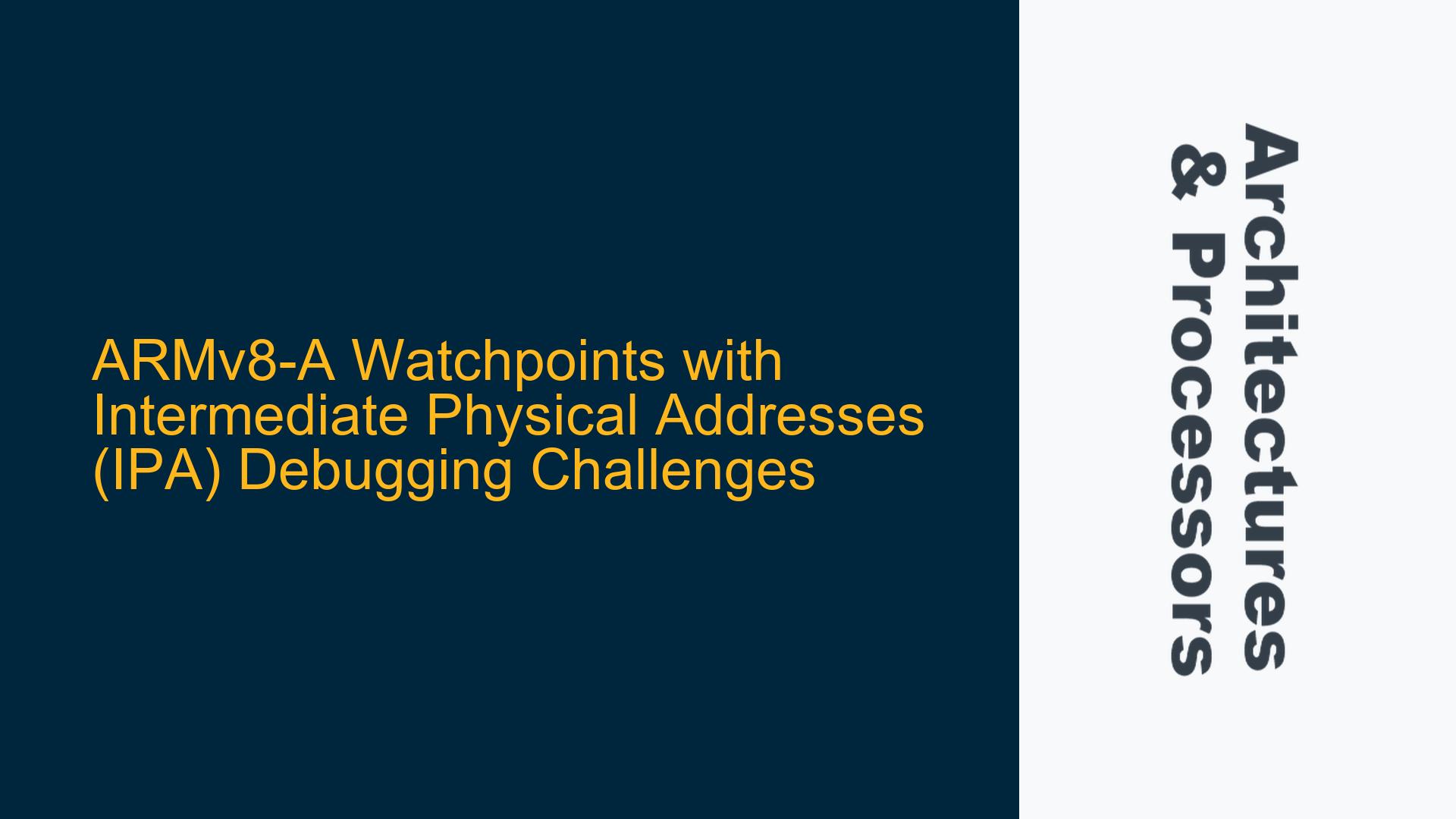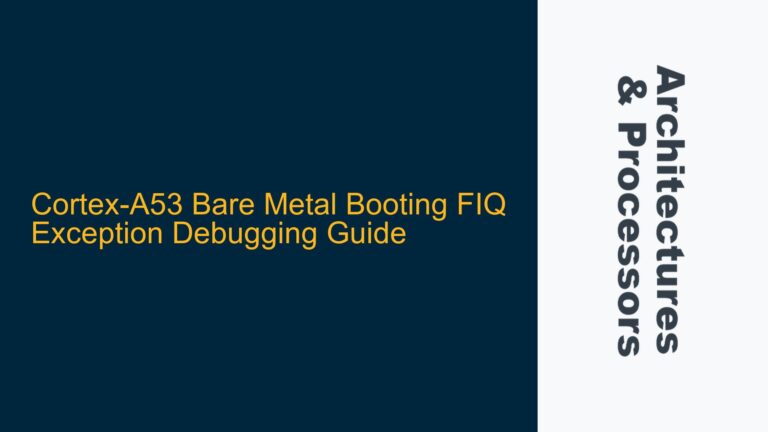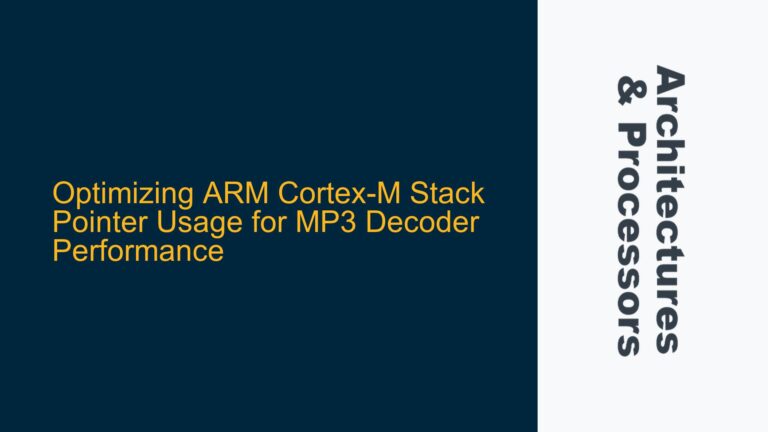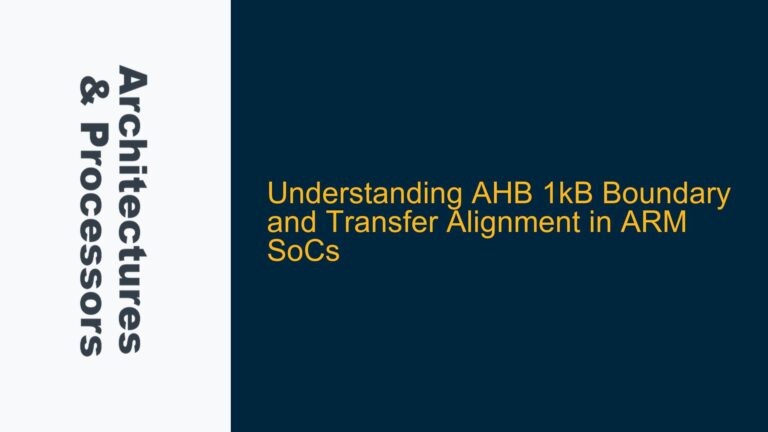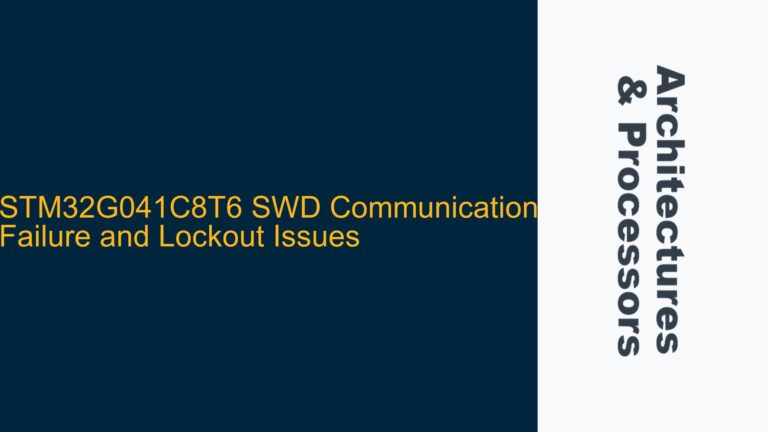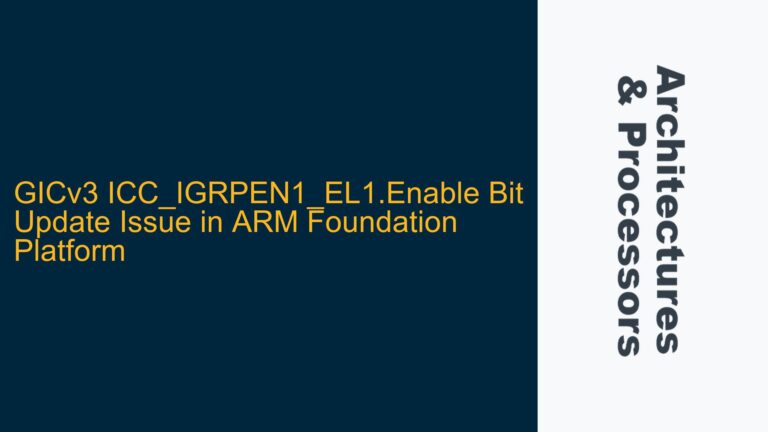ARMv8-A Watchpoint Configuration Limitations with Intermediate Physical Addresses (IPA)
In ARMv8-A architectures, the Debug Watchpoint Value Registers (DBGWVR
The ARMv8-A architecture does not natively support configuring watchpoints with IPAs in the DBGWVR
The inability to use IPAs directly in watchpoints is rooted in the ARMv8-A memory management and translation mechanisms. The Memory Management Unit (MMU) in ARMv8-A operates with multiple stages of address translation, including Stage 1 (VA to IPA) and Stage 2 (IPA to Physical Address (PA)). The debug architecture, however, is tightly coupled with the Stage 1 translation, which is why watchpoints are designed to work with VAs. This design choice simplifies the debug logic but limits flexibility in hypervisor environments where Stage 2 translations are critical.
Memory Translation Granularity and Hypervisor-Level Debugging Constraints
The primary cause of the inability to use IPAs in watchpoints lies in the granularity and design of the ARMv8-A debug architecture. The DBGWVR
Another contributing factor is the lack of support for IPA-based watchpoints in the ARMv8-A specification. The specification explicitly states that the DBGWVR
Additionally, the ARMv8-A architecture prioritizes simplicity and efficiency in its debug features. Supporting IPA-based watchpoints would require significant changes to the debug architecture, including modifications to the address translation logic and the exception handling mechanisms. These changes would not only complicate the design but also potentially impact the performance of the processor, particularly in hypervisor environments where address translation is already a critical performance factor.
Implementing Page-Level Faulting and Instruction Replacement for IPA Monitoring
Given the limitations of the ARMv8-A debug architecture, developers must resort to alternative methods to monitor IPA accesses in hypervisor environments. One approach is to mark the target memory pages as faulting at Stage 2 translation. This method involves configuring the Stage 2 page tables to generate a translation fault when the VM attempts to access the specified IPA. The hypervisor can then intercept the fault and handle it accordingly. However, this approach provides only page-level granularity, which may not be sufficient for fine-grained debugging or monitoring.
Another alternative is to replace the target instruction with a breakpoint instruction. This method is commonly used by external debuggers to monitor specific memory accesses. In a hypervisor environment, the hypervisor can dynamically replace the instruction at the target address with a breakpoint instruction, causing the VM to trap into the hypervisor when the instruction is executed. The hypervisor can then inspect the VM’s state and determine if the access was to the desired IPA. This approach offers finer granularity than page-level faulting but requires careful management of the VM’s instruction stream and may introduce additional complexity.
To implement page-level faulting, the hypervisor must configure the Stage 2 page tables to mark the target IPA as invalid or non-accessible. When the VM attempts to access the IPA, the MMU will generate a Stage 2 translation fault, which the hypervisor can handle. The hypervisor can then inspect the faulting address and determine if it matches the target IPA. If it does, the hypervisor can take the appropriate action, such as logging the access or emulating the memory operation. This method is relatively straightforward but is limited by the page size, which may be too coarse for some debugging scenarios.
For instruction replacement, the hypervisor must identify the instruction that accesses the target IPA and replace it with a breakpoint instruction, such as BRK. When the VM executes the breakpoint instruction, it will trap into the hypervisor, allowing the hypervisor to inspect the VM’s state and determine if the access was to the target IPA. The hypervisor can then emulate the original instruction and resume the VM’s execution. This method provides finer granularity than page-level faulting but requires careful management of the VM’s instruction stream and may introduce additional overhead.
Both methods have their trade-offs, and the choice of approach depends on the specific requirements of the debugging or monitoring scenario. Page-level faulting is simpler to implement but offers less granularity, while instruction replacement provides finer control but is more complex to manage. Developers must carefully consider these trade-offs when designing their hypervisor-level debugging solutions.
In conclusion, the ARMv8-A architecture’s lack of support for IPA-based watchpoints in the DBGWVR
